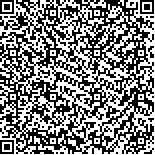李超,曾妍,戴萌,张耀文,曾佩珊,窦祖林,温红梅.不同病灶部位脑卒中患者吞咽障碍特点分析[J].中华物理医学与康复杂志,2018,40(1):20-23
扫码阅读全文

|
| 不同病灶部位脑卒中患者吞咽障碍特点分析 |
| Relationship between location of cerebral infarction and features of videofluoroscopic swallowing |
| |
| DOI: |
| 中文关键词: 脑卒中 病灶部位 吞咽造影 误吸 残留 环咽肌 |
| 英文关键词: Stroke Locations Videofluoroscopic swallowing study Aspiration Residue Upper esophageal sphincter |
| 基金项目:院支持计划青年人才基金(A1288) |
|
| 摘要点击次数: 6348 |
| 全文下载次数: 9837 |
| 中文摘要: |
| 目的 探讨不同病灶部位脑卒中患者吞咽障碍特点。 方法 纳入2015年1月至2016年8月期间在我院治疗且病变局限于单侧大脑或脑干的92例脑卒中患者作为研究对象。根据病变部位分为3组,其中单侧脑干病变29例(纳入单侧脑干组),左侧半球(皮质+白质)病变37例(纳入左侧半球组),右侧半球(皮质+白质)病变26例(纳入右侧半球组)。入院后所有患者进行吞咽造影检查,记录并对比各组患者口腔运送、吞咽启动、残留、渗漏、误吸、咳嗽反射及环咽肌开放等指标结果。 结果 3组患者在口腔运送(χ2=0.712,P=0.918)、吞咽启动(χ2=1.564,P=0.458)、渗漏(χ2=5.615,P=0.060)、咳嗽反射(χ2=5.882,P=0.053)方面组间差异均无统计学意义,单侧脑干组在会厌谷、梨状窦残留(χ2=6.508,P=0.011)和误吸(χ2=7.803,P=0.005)方面与左侧半球组间差异具有统计学意义,单侧脑干组在环咽肌开放方面与左侧半球组及右侧半球组间差异均具有统计学意义(χ2分别为29.555和24.630,均P<0.05)。 结论 单侧脑干较单侧大脑半球卒中更容易发生咽期吞咽障碍,主要表现为残留、误吸及环咽肌开放异常等方面,两侧大脑半球卒中后吞咽障碍特点无明显差异。 |
| 英文摘要: |
| Objective To explore whether the pattern of dysphagia verified using videofluoroscopic swallowing study (VFSS) was associated with the location of the infarction in stroke patients. Methods Ninety-two patients with dysphagia (admitted between January 2015 and August 2016) who had first onset of cerebral infarction confirmed by magnetic resonance imaging were included in this study. They were divided into a unilateral brainstem group (n=29), a left hemisphere (cortex + white matter) group (n=37) and a right hemisphere (cortex + white matter) group (n=26) according to the location of the stroke. All subjects were evaluated using VFSS, and the oral transit time (OTT), triggering of pharyngeal swallowing (TPS), presence of residue in the vallecular and pyriform sinus, penetration, aspiration, cough reaction and upper esophageal sphincter (UES) opening were recorded and compared among the three groups. Results There were no significant differences among the three groups in OTT (χ2=0.712, P=0.918), TPS (1.564, P=0.458), penetration(χ2=5.615, P=0.060) and cough reaction (χ2=5.882, P=0.053). The unilateral brainstem group had significantly more residue in the vallecular and pyriform sinus than the left hemisphere group (χ2=6.508, P=0.011). Aspiration was significantly more frequently found in the unilateral brainstem group than in the left hemisphere group (χ2=7.803, P=0.005). The unilateral brainstem group was more likely to have insufficient UES opening than the left hemisphere (χ2=29.555, P<0.001) and right hemisphere groups (χ2=24.630, P<0.001). Conclusions Unilateral brainstem stroke is more likely to cause dysphagia than the unilateral cerebral hemisphere stroke, characterized by the abnormal residue in the vallecular and pyriform sinus, aspiration and the degree of UES opening. No significant differences were found in the dysphagia between stroke survivors with stroke in right and left hemispheres. |
|
查看全文
查看/发表评论 下载PDF阅读器 |
| 关闭 |
|
|
|